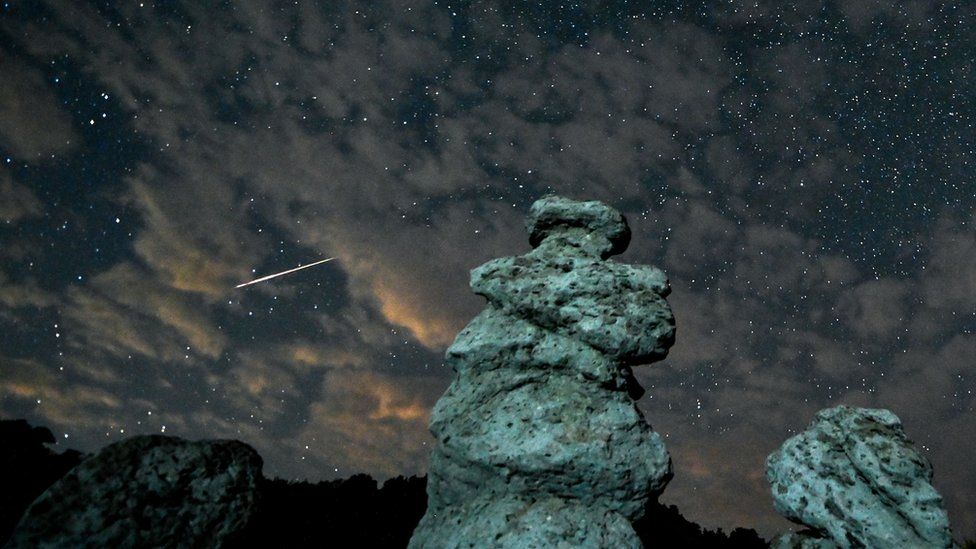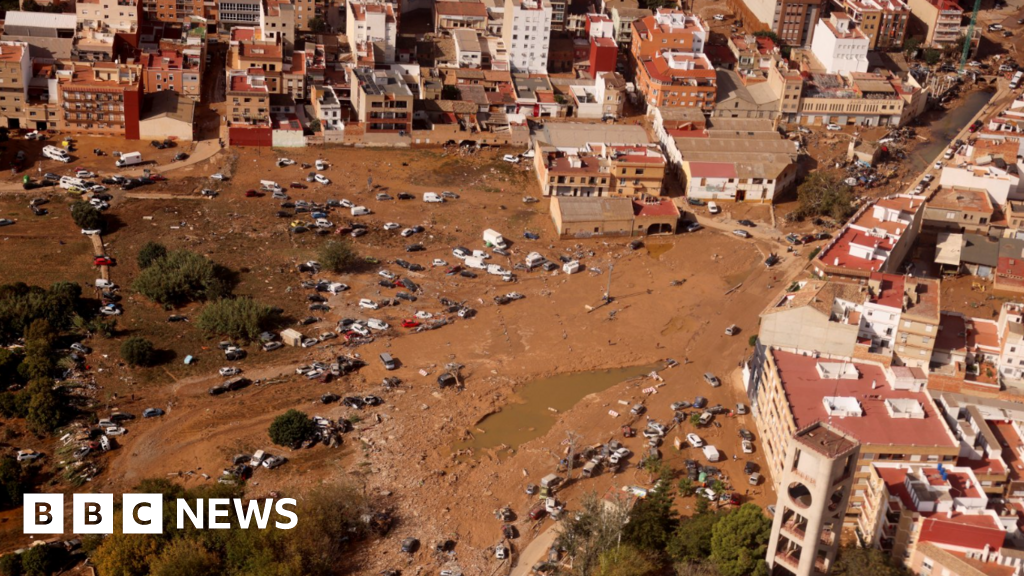ARTICLE AD BOX
 Image source, EPA
Image source, EPA
By Michael Sheils McNamee
BBC News
The annual Perseid meteor shower has lit up skies across the world to the delight of those hoping to catch a glimpse of a shooting star.
The phenomenon brings up to 100 meteors an hour, as the Earth slams into the debris left behind from comet 109P/Swift-Tuttle.
As the debris hits the Earth's atmosphere it burns up, resulting in the bright flashes known as shooting stars, which can be seen with the naked eye.
The natural display happens at a similar time in July and August each year, and this year peaked between Saturday night and the early hours of Sunday.
Image source, Getty Images
Image caption,A meteor was spotted in front of the Sphinx Door at the ancient city of Hattusa, in Turkey
Image source, Getty Images
Image caption,Two meteors streaked across the night sky above Leeberg hill in Grossmugl, Austria
The meteors - which can be as small as a grain of sand or as big as a pea - hit the Earth's atmosphere at speeds of 134,000 mph (215,000 km/h). The blazing debris does not pose any danger to us on Earth.
It is considered one of the best astronomical events because it produces bright meteors and is one of the most active.
Image source, Reuters
Image caption,This beautiful shot catches a shooting star and the lighthouse of the island of Lastovo in Croatia
Image source, Getty Images
Image caption,Sky watchers on the same island in Croatia brought out a telescope hoping to catch sight of a meteor
This year, Nasa's All Sky Fireball Network, which observes meteors using a network of cameras, detected the first Perseid meteor on 26 July.
Image source, Reuters
Image caption,A meteor streaks in the night sky during annual Perseid meteor shower at Shebenik National Park, in Fushe Stude, Albania.
It is called a "Perseid" meteor shower because the meteors appear to originate from the constellation of Perseus - named after a figure from Greek mythology.
Image source, EPA
Image caption,The Milky Way can be seen behind a Perseid meteor in this photo taken in Cantabria in Spain
Image source, Reuters
Image caption,A meteor can be seen during the annual Perseid meteor shower in Ronda, Spain
Callum White said he spent Saturday night in the Wye Valley for the Perseid meteor shower.
"I spent three hours looking out over the River Wye and although the cloud rolled in and out throughout, I saw quite a few meteors and the camera captured even more - they have all been combined to produce this photo."
Image source, Callum White
Image caption,Callum White spent three hours looking over the River Wye - "I saw quite a few meteors and the camera captured even more"
All pictures subject to copyright.
If you saw the Perseid meteor shower and took images of the event, you can send them to: haveyoursay@bbc.co.uk.
You can also get in touch in the following ways:
If you are reading this page and can't see the form you will need to visit the mobile version of the BBC website to submit your question or comment or you can email us at HaveYourSay@bbc.co.uk. Please include your name, age and location with any submission.

 1 year ago
13
1 year ago
13








 English (US)
English (US)